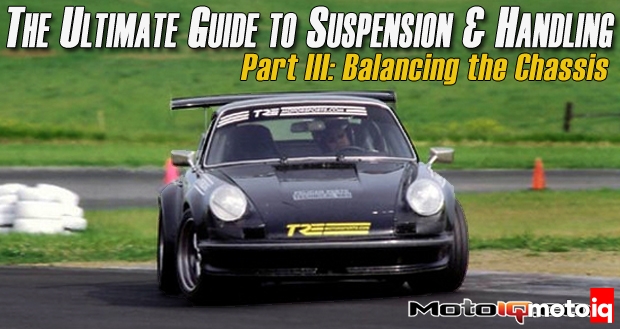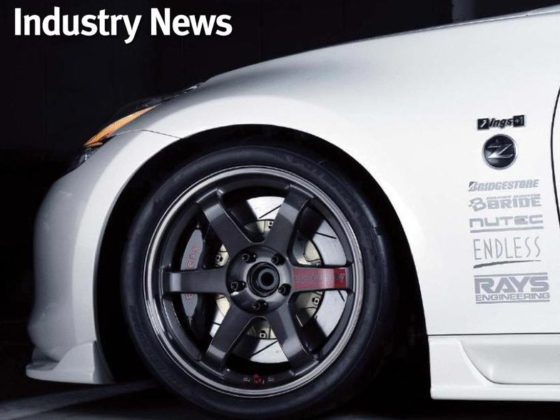,

How do we tune a car's handling balance? By manipulating the tire’s slip angle. Slip angle is defined by the difference between the direction the wheel is pointing and the direction the contact patch of the tire is pointing. At extreme slip angles the contact patch actually slides across the pavement. A chassis' primary dynamic contribution to slip angle is the load placed on each individual wheel while cornering. A greater load on a given wheel/tire results in a greater slip angle of that wheel/tire when subjected to a sideways cornering force. A nose heavy front-wheel drive car has more weight and thus cornering load on the front tires, which causes them to run a larger slip angle, than the rear tires. The front tires start to slide first and the car understeers. A rear engine car has a larger proportion of its weight on the rear tires. The rear tires run a larger slip angle so the car’s natural tendency is to oversteer. A mid engine car usually has the most even weight distribution with near equal slip angles from the front and rear tires. This is naturally more neutral handling than the other chassis layouts.
 This is a classic example of grinding understeer in a nose heavy front wheel drive car. I forget who this is but I know they are a member here who I have corresponded with.
This is a classic example of grinding understeer in a nose heavy front wheel drive car. I forget who this is but I know they are a member here who I have corresponded with.Proper manipulation of tire loading and slip angle by controlling weight transfer is key to balancing the chassis. By altering weight transfer and tire loading during cornering, much can be done to change a car’s natural handling tendencies. Can you make a nose heavy front-wheel car oversteer? Sure, look at most successful racing front-wheel cars, they oversteer like crazy. To protect its customers, Porsche delivers most of its tail-heavy 911 models with a state of suspension tune that counters its natural tendency to overseer.
 Another example of classic oversteer, this time in a tail heavy rear engine Porsche 911.
Another example of classic oversteer, this time in a tail heavy rear engine Porsche 911.How does a tuner manipulate tire loading and slip angle? By tweaking the spring rates, anti-roll bar rates, tire sizing, tire pressure and to a lesser degree the shock damping. The first and cheapest option a tuner has is to increase the tire pressure. The harder a tire is inflated, within reason, the smaller slip angle it develops. For example, in the case of a nose-heavy front-wheel drive car, if you add several psi to the front tires and take some pressure out of the rear, the front tires will run a smaller slip angle while the rear tires’ slip angle will increase. This alone will do quite a bit to reduce understeer.
 Adjusting tire pressures is the most basic, effective, simple and cheap ways of tuning your chassis. I thought you might prefer to see this picture of Verena Mei setting her tire pressure instead of looking at my buttcrack while doing the same thing.
Adjusting tire pressures is the most basic, effective, simple and cheap ways of tuning your chassis. I thought you might prefer to see this picture of Verena Mei setting her tire pressure instead of looking at my buttcrack while doing the same thing.



3 comments
You blown my mind when stated that slightly more pressure in tires will gain traction in the respectively axle (due less slip angle). Huge fan here, Mike!
Greetings from Brazil.
Can you help explain a bit more on the physical phenomenon involved with more pressure = less slip angle? The way I am imagining keeps involving tire carcass twisting deflection between the contact patch and wheel angle, but am not sure that’s right since slip angle doesn’t specify whether it’s the carcass or wheel angle that is compared to the car’s heading.
Great series, thanks Mike!
You guessed correctly, it’s both. More pressure makes the carcass stiffer.